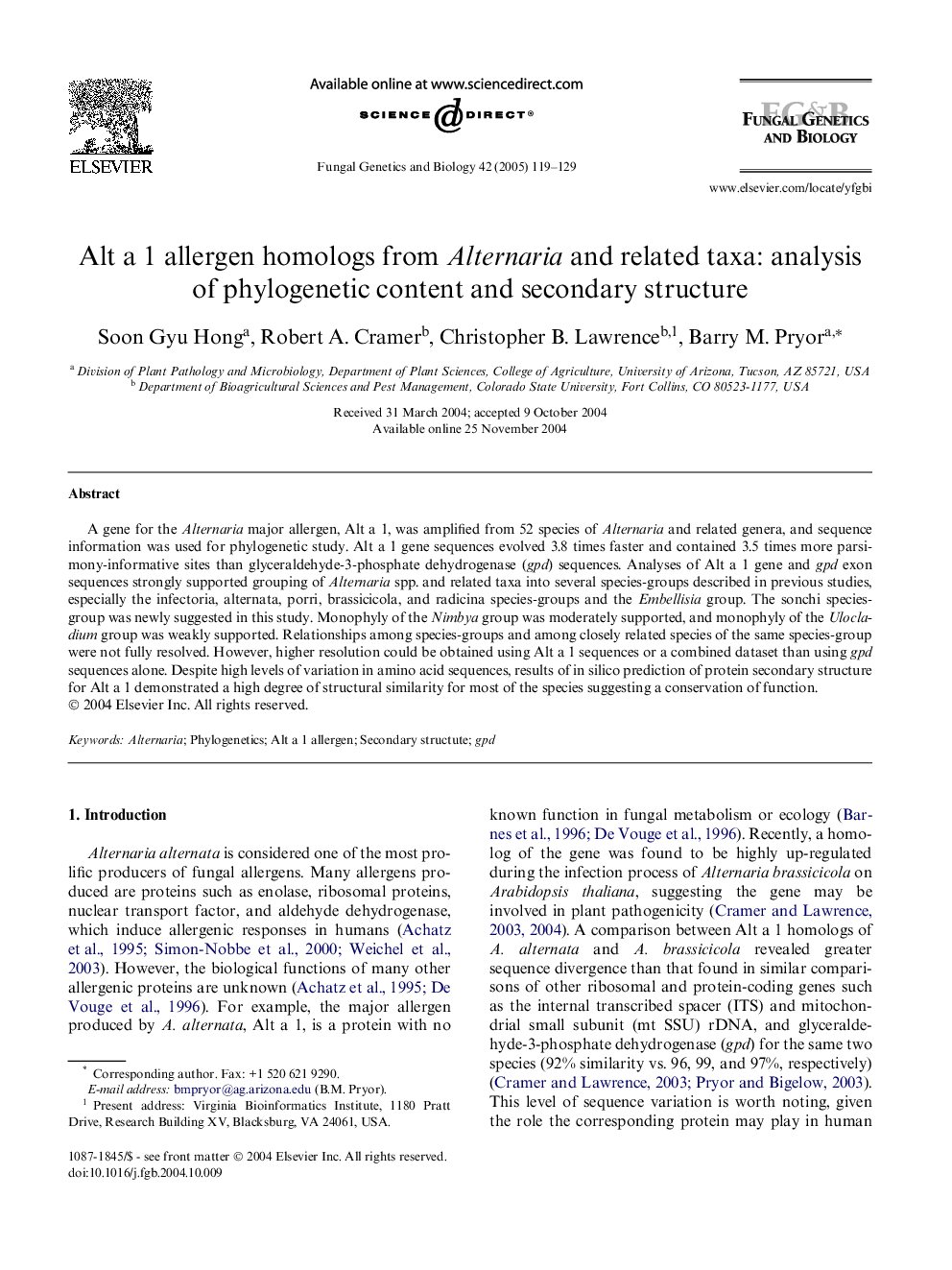| Article ID | Journal | Published Year | Pages | File Type |
|---|---|---|---|---|
| 10939718 | Fungal Genetics and Biology | 2005 | 11 Pages |
Abstract
A gene for the Alternaria major allergen, Alt a 1, was amplified from 52 species of Alternaria and related genera, and sequence information was used for phylogenetic study. Alt a 1 gene sequences evolved 3.8 times faster and contained 3.5 times more parsimony-informative sites than glyceraldehyde-3-phosphate dehydrogenase (gpd) sequences. Analyses of Alt a 1 gene and gpd exon sequences strongly supported grouping of Alternaria spp. and related taxa into several species-groups described in previous studies, especially the infectoria, alternata, porri, brassicicola, and radicina species-groups and the Embellisia group. The sonchi species-group was newly suggested in this study. Monophyly of the Nimbya group was moderately supported, and monophyly of the Ulocladium group was weakly supported. Relationships among species-groups and among closely related species of the same species-group were not fully resolved. However, higher resolution could be obtained using Alt a 1 sequences or a combined dataset than using gpd sequences alone. Despite high levels of variation in amino acid sequences, results of in silico prediction of protein secondary structure for Alt a 1 demonstrated a high degree of structural similarity for most of the species suggesting a conservation of function.
Keywords
Related Topics
Life Sciences
Biochemistry, Genetics and Molecular Biology
Cell Biology
Authors
Soon Gyu Hong, Robert A. Cramer, Christopher B. Lawrence, Barry M. Pryor,
